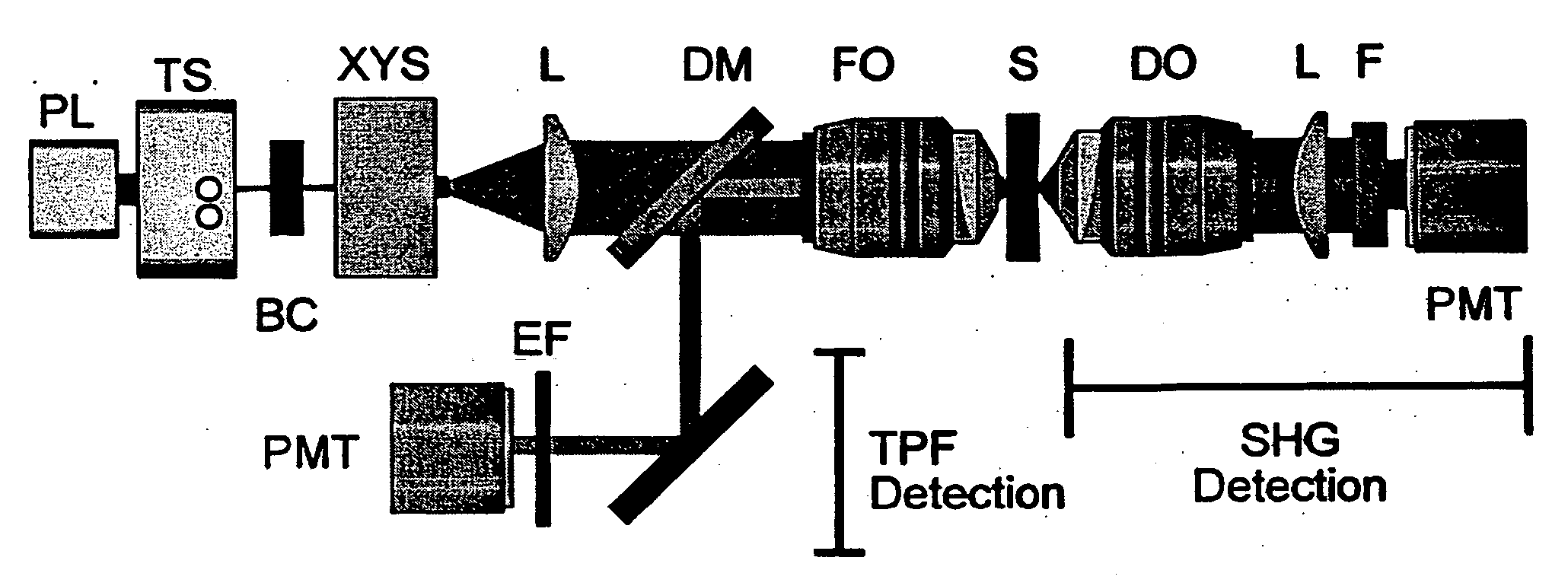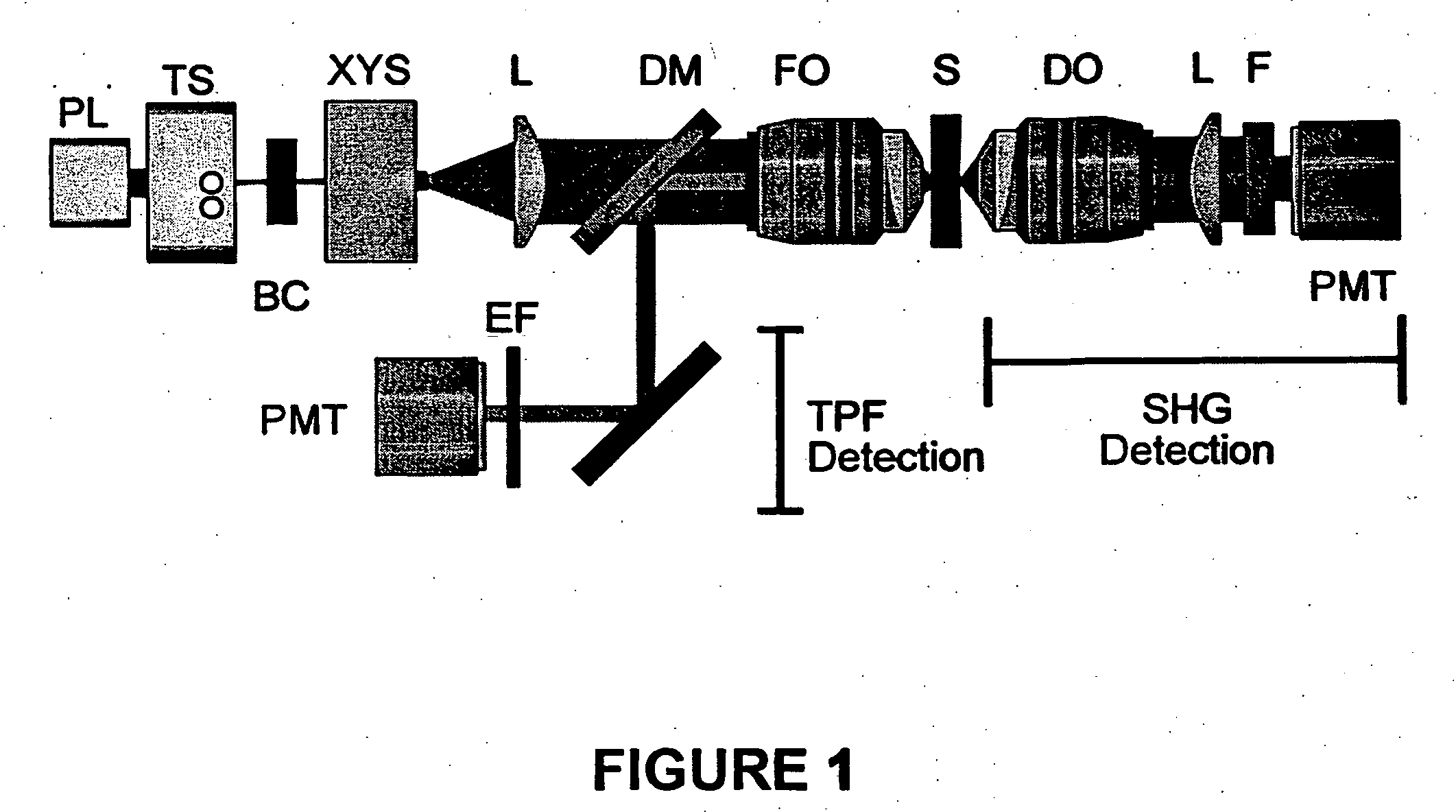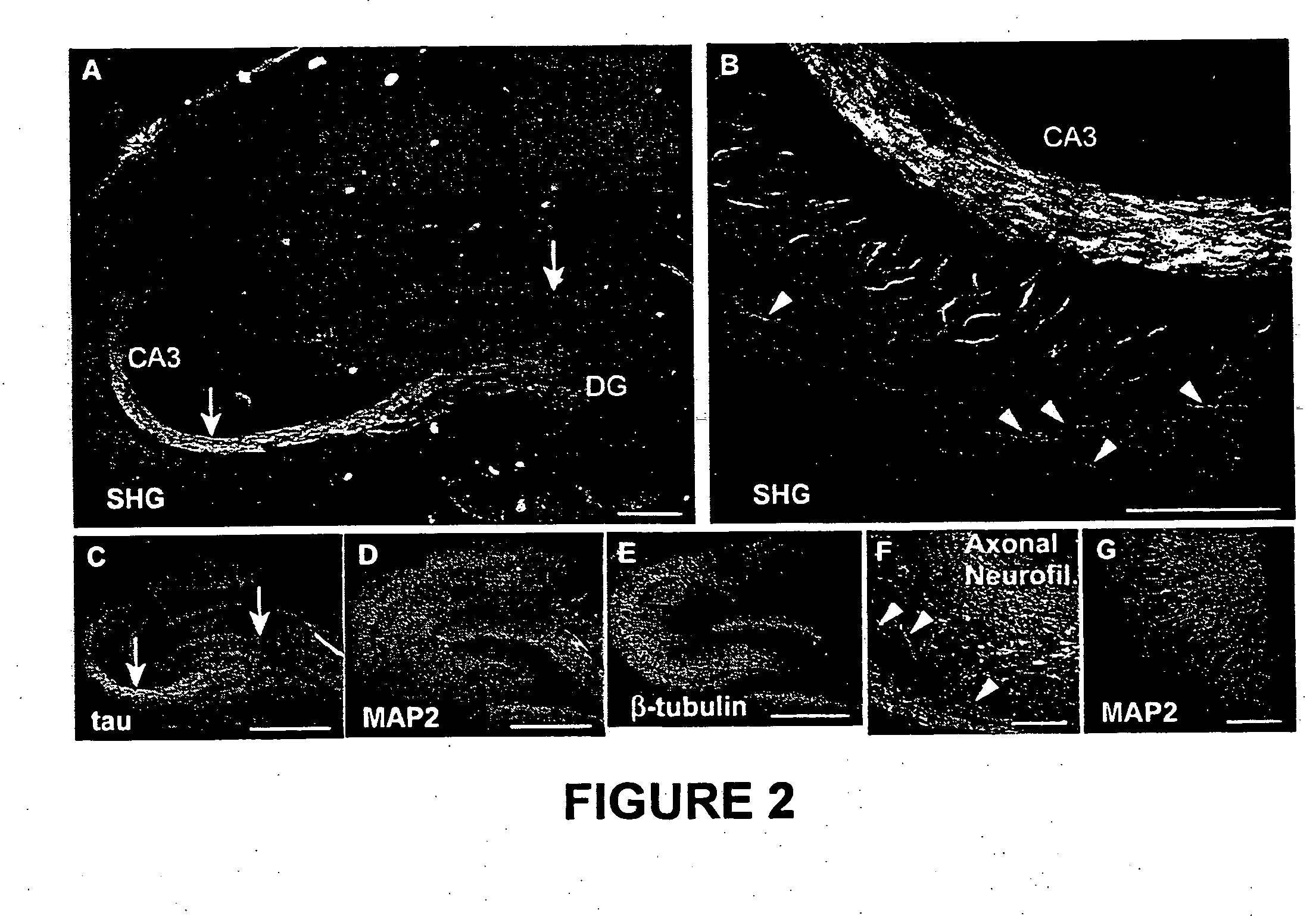Nonlinear optical detection of fast cellular electrical activity
a technology of cellular electrical activity and optical detection, applied in optical radiation measurement, fluorescence/phosphorescence, instruments, etc., can solve the problems of reducing the effective observed dye response to membrane potential, limiting previous methods, and poor spatial resolution deep in scattering tissues (such as neural tissue), so as to increase the brightness and reduce photodamage, and improve the effect of sensitivity to membrane potential changes
- Summary
- Abstract
- Description
- Claims
- Application Information
AI Technical Summary
Benefits of technology
Problems solved by technology
Method used
Image
Examples
example 1
Uniform Polarity Microtubule Assemblies Imaged in Native Brain Tissue by Second-Harmonic Generation Microscopy
[0047] Microtubule ensemble polarity is a diagnostic determinant of the structure and function of neuronal processes. Polarized microtubule (“MT”) structures are selectively imaged with second-harmonic generation (“SHG”) microscopy in native brain tissue. This SHG is found to colocalize with axons in both brain slices and cultured neurons. Because SHG stems only from non-inversion symmetric structures, the uniform polarity of axonal MTs leads to the observed signal, whereas the mixed polarity in dendrites leads to destructive interference. SHG imaging provides a new tool to investigate the kinetics and function of MT ensemble polarity in dynamic native brain tissue structures and other subcellular motility structures based on polarized MTs.
[0048] As demonstrated in Examples 2-13 (infra), the first intrinsic sources of SHG from cultured neurons and acute slices from the hip...
example 2
Imaging
[0049] SHG and TPF microscopy were simultaneously performed on either a Bio-Rad MRC 1024 or Radiance scan head on a modified inverted Olympus IX-70 microscope (FIG. 1). The excitation source was a mode-locked Ti:Sapphire laser (˜100 fs pulses at 80 MHz) (Spectra-Physics) pumped by a 5 W solid state Millennia laser (Spectra-Physics). The laser polarization was controlled via a Berek polarization compensator (New Focus, San Jose, Calif.) and the beam focused into the sample with one of the following (overfilled back aperture) objectives: Zeiss C-Apochromat 10× / 0.45 NA, Olympus UApo 20× / 0.7 NA, Zeiss Fluar 20× / 0.75 NA, Olympus UApo 40× / 1.15 NA, Zeiss Fluar 40× / 1.3 NA. The resultant SHG was collected in the transmitted (forward) direction with an Olympus XLUMPlanFl 20× / 0.95 NA objective, while the TPF was epi-collected through the excitation objective. A combination of dichroic mirrors, band-pass and blue-glass filters (Chroma Technology, Brattleboro, Vt.) and polarization analy...
example 3
Acute Hippocampal Slices
[0051] Transverse hippocampal slices 250-400 μm thick were prepared from 14 to 20 day old Sprague-Dawley rat pups using a vibratome, and were incubated at 34° C. in artificial cerebrospinal fluid (ACSF) containing (in mM): 118 NaCl, 3 KCl, 1 KH2PO4, 1 MgSO4, 20 Glucose, 1.5 CaCl2 and 25 NaHCO3. The ACSF was oxygenated with 95% O2 and 5% CO2. Imaging was performed in ACSF filled glass bottom culture dishes (World Precision Instruments) at room temperature or at 34° C.
PUM
 Login to View More
Login to View More Abstract
Description
Claims
Application Information
 Login to View More
Login to View More - R&D
- Intellectual Property
- Life Sciences
- Materials
- Tech Scout
- Unparalleled Data Quality
- Higher Quality Content
- 60% Fewer Hallucinations
Browse by: Latest US Patents, China's latest patents, Technical Efficacy Thesaurus, Application Domain, Technology Topic, Popular Technical Reports.
© 2025 PatSnap. All rights reserved.Legal|Privacy policy|Modern Slavery Act Transparency Statement|Sitemap|About US| Contact US: help@patsnap.com



